Abstract
Bacteria with antibacterial activity were isolated from seawater, sediments, phytoplankton, and zooplankton of Suruga, Sagami, and Tokyo Bays and from soft corals and sponges collected from the Taiwan coast. Of the 726 strains isolated, 37 showed antibacterial activity against either Vibrio parahaemolyticus (ATCC 17802) or Staphylococcus aureus (P209). Sediment harbored the lowest number of these forms of bacteria, and those from Tokyo Bay did not show any activity. Attached isolates showed greater activity compared with free-living forms. Relatively high numbers of strains with antibacterial activity were associated with phytoplankton. Among the zooplankton isolates, cladocerans harbored the maximum number of antibacterial strains. Isolates were more inhibitory to gram-positive test cultures. Autoinhibition was observed only among 8% of the isolates. Marine nonproducers were more susceptible. Pseudomonas/Alteromonas species made up 81.0% of isolates, of which 30% were pigmented strains. The absence or reduction in number of bacteria with antibacterial activity in Tokyo Bay is attributed to its eutrophic nature, which may tend to moderate the production of antibacterial compounds.
Full text
PDF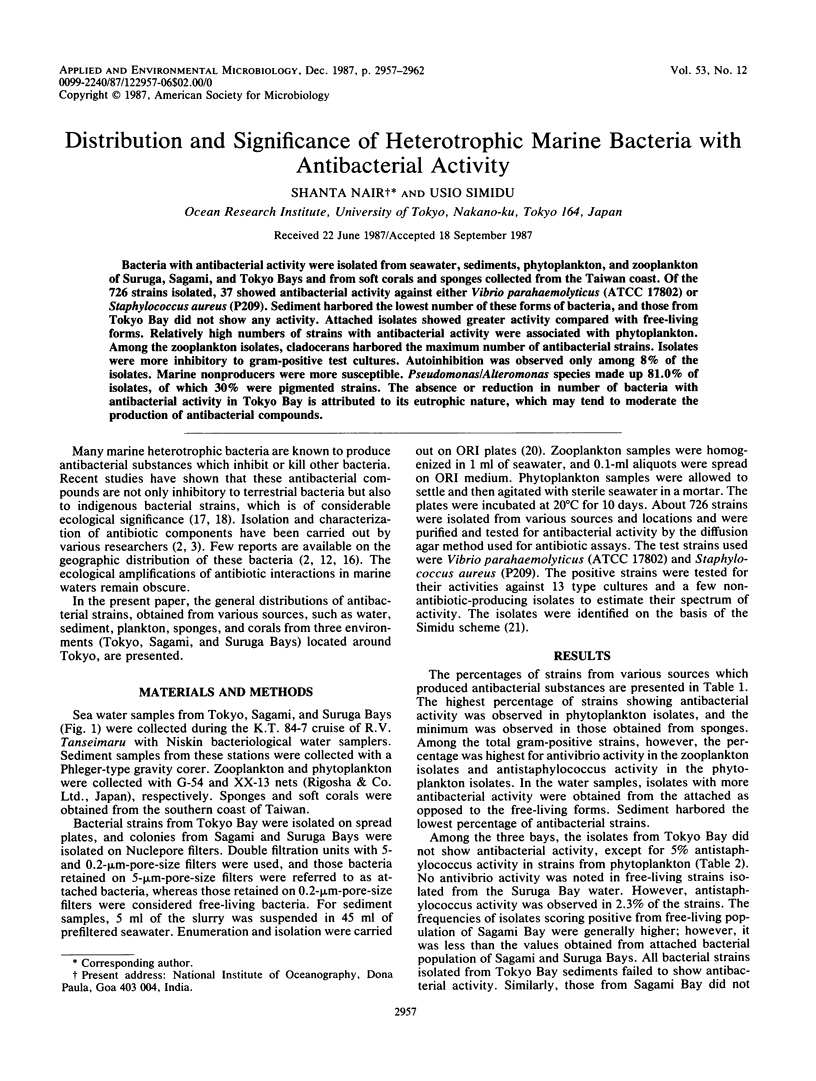
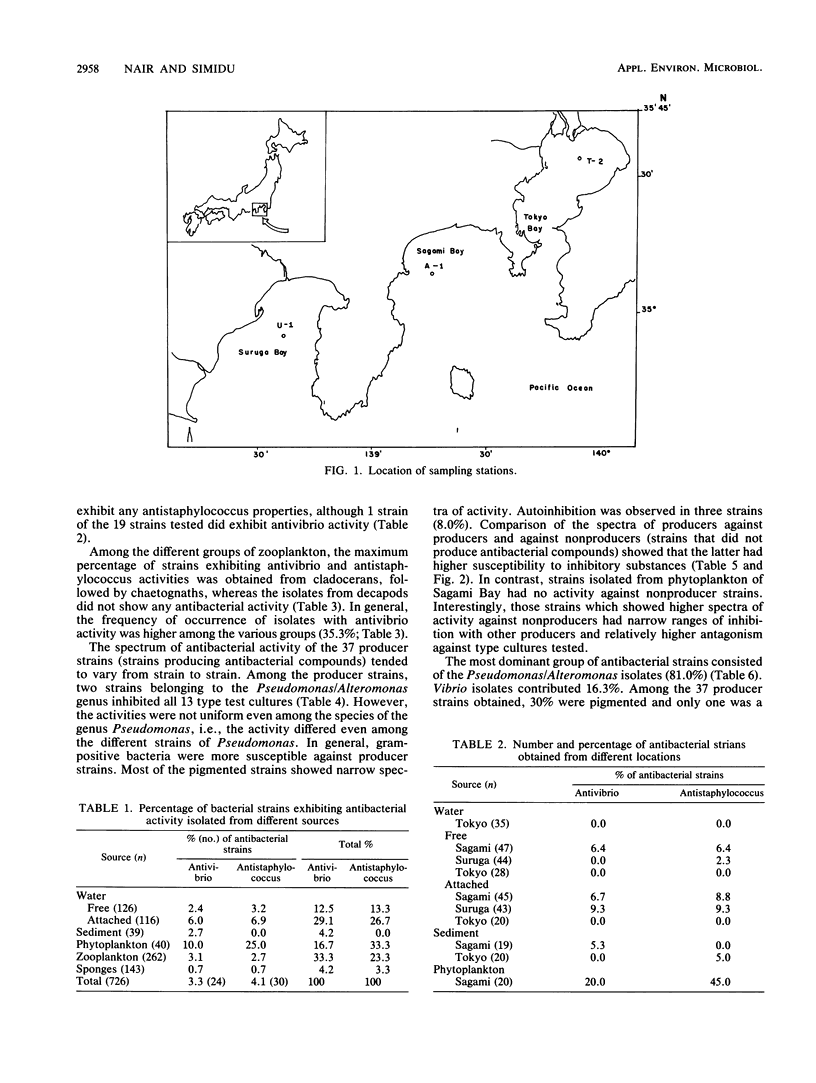
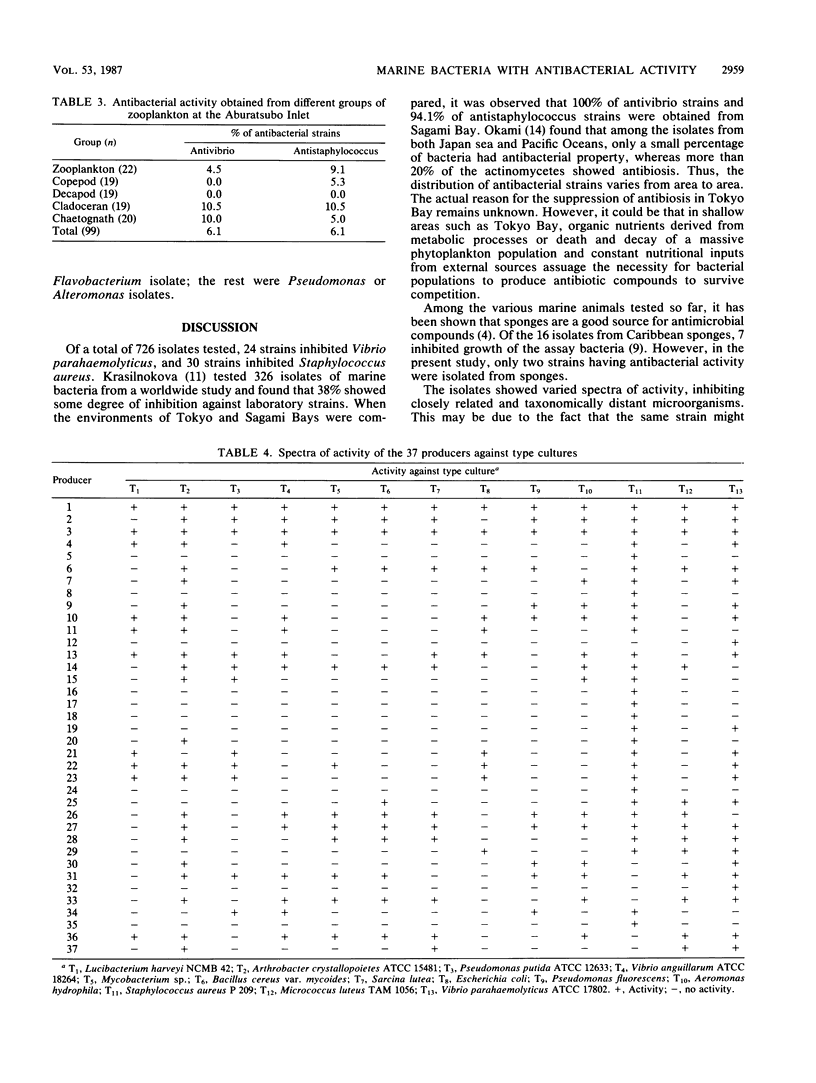
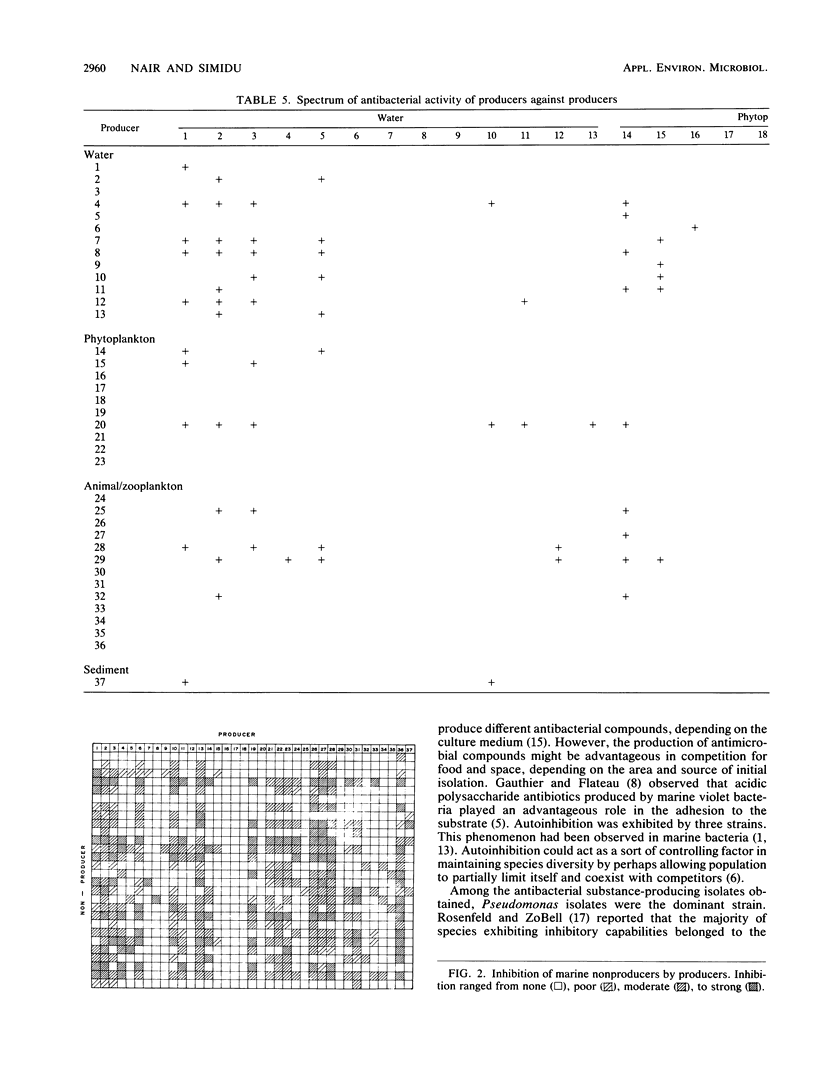

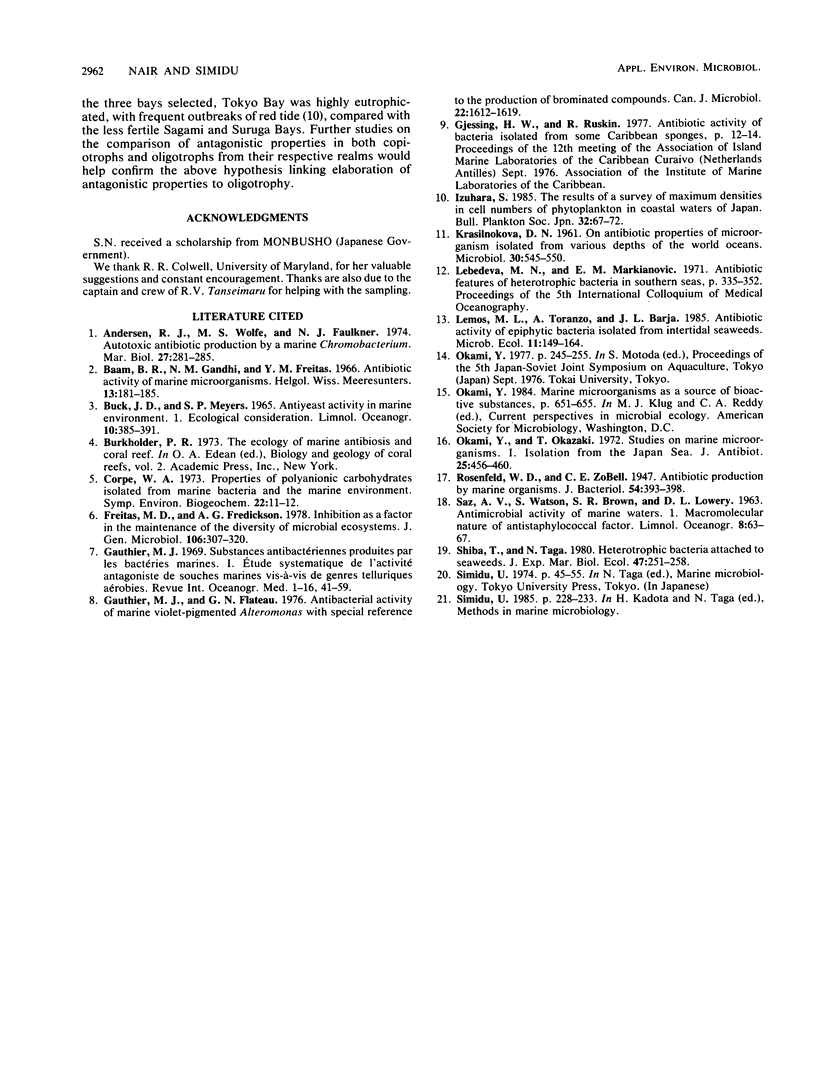
Selected References
These references are in PubMed. This may not be the complete list of references from this article.
- Gauthier M. J., Flatau G. N. Antibacterial activity of marine violet-pigmented Alteromonas with special reference to the production of brominated compounds. Can J Microbiol. 1976 Nov;22(11):1612–1619. doi: 10.1139/m76-237. [DOI] [PubMed] [Google Scholar]
- Okami Y., Okazaki T. Studies on marine microorganisms. I. Isolation from the Japan Sea. J Antibiot (Tokyo) 1972 Aug;25(8):456–460. doi: 10.7164/antibiotics.25.456. [DOI] [PubMed] [Google Scholar]
- Rosenfeld W. D., Zobell C. E. Antibiotic Production by Marine Microorganisms. J Bacteriol. 1947 Sep;54(3):393–398. doi: 10.1128/jb.54.3.393-398.1947. [DOI] [PMC free article] [PubMed] [Google Scholar]


